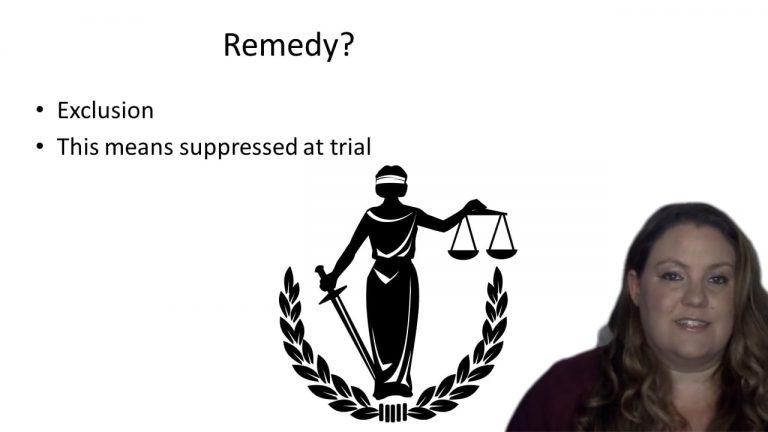SmartBrief
Confirm favorite deletion?
Criminal Procedure Keyed to Dressler
Illinois v. Wardlow
Citation:
528 U.S. 119, 120 S.Ct. 673, 145 L.Ed.2d 570.Facts
Officers were driving around an area known for heavy narcotics trafficking in order to investigate drug transactions. An officer noticed the defendant standing next to a building holding an opaque bag. The defendant looked in the direction of the officers and fled. The officers turned their car around and watched him as he ran through an alley. They eventually cornered him on the street, exited their vehicle, and stopped the defendant.
The officer immediately conducted a protective pat-down search for weapons because, in his experience, it was common for there to be weapons involved with narcotics transactions. During the frisk, the officer squeezed the bag the defendant was carrying and felt a heavy, hard object similar to the shape of a gun. The officer then opened the bag and discovered a handgun with five rounds of ammunition. The officers arrested the defendant.
The Illinois trial court denied the defendant’s motion to suppress, finding the gun was recovered during a lawful Terry stop, and he was found guilty. The Illinois Appellate Court reversed, holding that the gun should have been suppressed because the officer did not have reasonable suspicion sufficient to justify a Terry stop. The Illinois Supreme Court agreed. The State appealed.
Only StudyBuddy Pro offers the complete Case Brief Anatomy*
Access the most important case brief elements for optimal case understanding.
*Case Brief Anatomy includes: Brief Prologue, Complete Case Brief, Brief Epilogue
- The Brief Prologue provides necessary case brief introductory information and includes:
Topic:
Identifies the topic of law and where this case fits within your course outline.Parties:
Identifies the cast of characters involved in the case.Procedural Posture & History:
Shares the case history with how lower courts have ruled on the matter.Case Key Terms, Acts, Doctrines, etc.:
A case specific Legal Term Dictionary.Case Doctrines, Acts, Statutes, Amendments and Treatises:
Identifies and Defines Legal Authority used in this case.
- The Case Brief is the complete case summarized and authored in the traditional Law School I.R.A.C. format. The Pro case brief includes:
Brief Facts:
A Synopsis of the Facts of the case.Rule of Law:
Identifies the Legal Principle the Court used in deciding the case.Facts:
What are the factual circumstances that gave rise to the civil or criminal case? What is the relationship of the Parties that are involved in the case.Issue(s):
Lists the Questions of Law that are raised by the Facts of the case.Holding:
Shares the Court's answer to the legal questions raised in the issue.Concurring / Dissenting Opinions:
Includes valuable concurring or dissenting opinions and their key points.Reasoning and Analysis:
Identifies the chain of argument(s) which led the judges to rule as they did.
- The Brief Prologue closes the case brief with important forward-looking discussion and includes:
Policy:
Identifies the Policy if any that has been established by the case.Court Direction:
Shares where the Court went from here for this case.
Topic Resources
Topic Outline
Topic Refresher Course
Topic Charts & Notes

 15m 53s
15m 53s